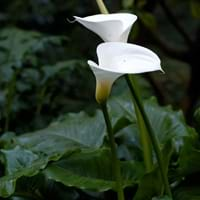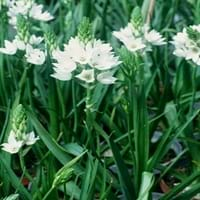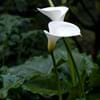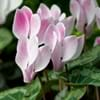Life Span
Perennial
Perennial
Type
Bulb, Flowering Plants
Bulb or Corm or Tuber
Origin
South Africa, Swaziland
Southern Africa, South Africa
Types
Passionfruit, Fire glow, Gem rose, Blaze, Crystal blush
not available
Number of Varieties
Not Available
Habitat
Swamps
marshes, Sandy flats, Slopes
USDA Hardiness Zone
8-10
7-10
Sunset Zone
2a, 2b, 5, 6, 8, 9, 12, 13, 14, 15, 16, 17, 18, 19, 20, 21, 22, 23, 24
21,22
Habit
Clump-Forming
Clump-Forming
Flower Color
Blue, Dark Purple, Light Purple, Red, White
Orange, Gold
Flower Color Modifier
Bicolor
Bicolor
Fruit Color
Not Available
Not Available
Leaf Color in Spring
Dark Green
Green, Blue Green, Yellow green
Leaf Color in Summer
Green, Dark Green
Light Green
Leaf Color in Fall
Green, Dark Green
Several shades of Green
Leaf Color in Winter
Green, Dark Green
Light Green
Leaf Shape
Arrowhead
Succulent
Plant Season
Autumn, Spring, Summer
Spring, Winter
Sunlight
Full Sun, Part sun, Partial shade
Full Sun, Partial Sun, Partial shade
Growth Rate
Medium
Not Available
Type of Soil
Clay, Loamy
Clay, Loam, Sand
The pH of Soil
Neutral, Slightly Acidic
Acidic, Neutral, Alkaline
Soil Drainage
Average
Well drained
Bloom Time
Spring, Summer
Early Spring, Spring, Winter, Late Winter
Tolerances
Wet Site
Drought
Where to Plant?
Container, Pot
Container, Ground
How to Plant?
From bulbs, From Rhizomes, Seedlings, Transplanting
Bulbs, Seedlings
Plant Maintenance
Medium
Medium
Watering Requirements
Over-watering can cause leaf problems or root diseases, Requires a lot of watering
Keep ground moist, Reduce watering in winter, Water three times weekly in summer
In Summer
Lots of watering
Lots of watering
In Spring
Moderate
Moderate
In Winter
Average Water
Average Water
Soil pH
Neutral, Slightly Acidic
Acidic, Neutral, Alkaline
Soil Type
Clay, Loamy
Clay, Loam, Sand
Soil Drainage Capacity
Average
Well drained
Sun Exposure
Full Sun, Part sun, Partial shade
Full Sun, Partial Sun, Partial shade
Pruning
Prune to stimulate growth, Remove dead or diseased plant parts, Remove deadheads
Prune to control growth, prune to control shape, Prune to stimulate growth
Fertilizers
All-Purpose Liquid Fertilizer
All-Purpose Liquid Fertilizer
Pests and Diseases
Armillaria mellea, Gray mold, Leaf spot, Powdery mildew, Pythium rot, Rhizoctonia crown rot, Root rot, Thripes
Not Available
Plant Tolerance
Drought
Drought
Flower Petal Number
Single
Single
Foliage Texture
Coarse
Medium
Foliage Sheen
Glossy
Glossy
Attracts
Not Available
Butterflies, Insects, pollinators
Allergy
Diarrhea, Intestinal gas, Vomiting
Skin irritation, Skin rash, Toxic
Aesthetic Uses
Beautification, Bouquets
Beautification, Cut Flowers, Showy Purposes, Used as an interior landscaping species, Used for decorating walls, fences, gates, hedges, etc.
Beauty Benefits
Not Available
Not Available
Environmental Uses
Air purification
Air purification
Medicinal Uses
Not Available
Not Available
Part of Plant Used
Flowers
Flowers
Other Uses
Showy Purposes
Beneficial species for attracting pollinators, Showy Purposes, Used as Ornamental plant, Used for Landscaping
Used As Indoor Plant
No
Yes
Used As Outdoor Plant
Yes
Yes
Garden Design
Not Available
Container, Cutflower, Mixed Border, Rock Garden / Wall
Botanical Name
Zantedeschia Aethiopica
Ornithogalum thyrsoides
Common Name
Calla Lily
Chincherinchee, Wonder-flower, Star-of-Bethlehem
In Hindi
Calla Lily
Chincherinchee
In German
Calla-Lilien-
Kap-Milchstern
In French
Lys calla
Chincherinchee
In Spanish
Cala
Chincherinchee
In Greek
Calla κρίνος
Ornithogalum thyrsoides
In Portuguese
Calla
Chinkerinchee
In Polish
Calla Lily
Chincherinchee,
In Latin
Calla Lilium
Chincherinchee
Phylum
Magnoliophyta
Magnoliophyta
Class
Liliopsida
Liliopsida
Order
Alismatales
Asparagales
Family
Araceae
Asparagaceae
Genus
Zantedeschia
Ornithogalum
Clade
Angiosperms, Monocots
Angiosperms, Monocots
Tribe
Zantedeschieae
Ornithogaleae
Subfamily
Aroideae
Scilloideae
Importance of Calla Lily and Chincherinchee
Want to have the most appropriate plant for your garden? You might want to know the importance of Calla Lily and Chincherinchee. Basically, these two plants vary in many aspects. Compare Calla Lily and Chincherinchee as they differ in many characteristics such as their life, care, benefits, facts, etc. Every gardener must at least have the slightest clue about the plants he wants to plant in his garden. Compare their benefits, which differ in many ways like facts and uses. The medicinal use of Calla Lily is Not Available whereas of Chincherinchee is Not Available. Calla Lily has beauty benefits as follows: Not Available while Chincherinchee has beauty benefits as follows: Not Available.
Compare Facts of Calla Lily vs Chincherinchee
How to choose the best garden plant for your garden depending upon its facts? Here garden plant comparison will help you to solve this query. Compare the facts of Calla Lily vs Chincherinchee and know which one to choose. As garden plants have benefits and other uses, allergy is also a major drawback of plants for some people. Allergic reactions of Calla Lily are Diarrhea, Intestinal gas and Vomiting whereas of Chincherinchee have Skin irritation, Skin rash and Toxic respectively. Having a fruit bearing plant in your garden can be a plus point of your garden. Calla Lily has no showy fruits and Chincherinchee has no showy fruits. Also Calla Lily is flowering and Chincherinchee is not flowering . You can compare Calla Lily and Chincherinchee facts and facts of other plants too.





